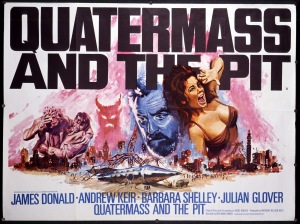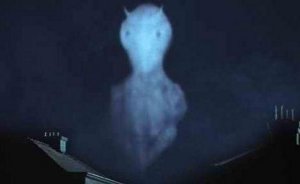My attention span is so short these days that I did not really remember what this title was in reference to until a voiceover in the episode itself called it out. My god, I’ve become one of those people.

Right, let’s go through this piece by piece:
- Speaking of being one of those people, I hate to say this but what was the point of Odo’s bondage scene? Gisla doesn’t like him, so he hooks up with some random Frankish flatterer — but he has … kinky … desires. Lord. OK, where to begin? Apparently Odo has some kind of sex dungeon right in the heart of Paris, and this is not an open secret. Leaving that aside, absolutely nothing happens in this scene. The woman (whose name I don’t think we even know) gets her kit off and Odo starts whipping her. I guess this is supposed to be a big revelation about Odo’s character? I’m not sure I see that, and it’s hard to see that anyone who knows more than one person who’s into BDSM could either (statistically, that’s everyone, I expect). Like … if you are trying to show me that Odo is a dominant personality who is into control, maybe the previous episodes in which he is the general of a fucking army might have given me a hint. I just … much is made of “sexposition” on Game of Thrones, and it was pretty stupid, but at least they tried to use their sex scenes to, y’know, illuminate the characters and advance the plot. Sometimes. But this? I mean … look, I’m not against boobs. I stand on my record there. But images of boobs are readily and cheaply available. If you’re going to put them into something otherwise boob-free, it would be nice if they played a role, or even nicer if they didn’t try to act like they were all significant and not just a lazy attempt to pander. Also, if you need to suggest that someone has a secret perversion, maybe don’t make it a) the most ubiquitous kink there is, and b) the same one as the last guy who had his secret perversions revealed, you know? Sorry; that went on longer than I expected it to.
- I am, shall we say, not wholly convinced by Ragnar’s plan, but whatever — if it’s good enough for Snorri it’s good enough for me.
- I mention Snorri because Ragnar’s plan is straight out of King Harald’s Saga again, although of course Harald Hardrada was already a Christian, it being the 11th century. This does mean that the saga account has the added detail that all the priests and monks want Harald buried in their churches because of the gifts it’ll bring. That’s a nice detail and it’s a shame the context here doesn’t allow it. Are we going to get the thing with the birds?
- Seriously, actually, that bird story is also told about Olga of Kiev, and I will forgive a lot if Olga turns up in this series as a tough-as-hell older queen. Make it happen, History Channel.
- I don’t want to be all history-purist about Rollo and his conversion, but I am going to be mad as hell if this turns out to be Rollo’s downfall. The converts win in the end. You can’t fight City Hall. I realise this isn’t The Wire, but I have a lot of time for shows where you can’t fight City Hall. Also, I am given to understand that Paris worth a mass, and surely the same must be said for Normandy. I’m just waiting for him to turn up next season all clean-shaven. “Rollo, how could you?!” “It’s Robert now, actually.”
- Speaking of Rollo, I do sometimes think that this show’s generally-clumsy dialogue can overshadow the fact that there is some particularly good acting happening at times. Take Clive Standen, for instance: I am only speculating, but I would assume that he was cast for being a huge ferocious-looking dude. But he nails that hopeful little “hello!” at the end of the episode in a way that reminds you that no matter how much of a goof he is, you secretly want Rollo to do well.
- Having worn out all of his other co-conspirators, Ragnar seems to be relying on Bjorn these days. I hope that means that Bjorn will be the main character after Ragnar dies; it seems like we are due a time-jump between this season and the next, which presumably means we get the rest of the Ragnarssons as larger characters? That’d be nice.
And that’s it for this season. What am I going to be rude about now? When does Marco Polo start up again? I could be rude about that, maybe.

























